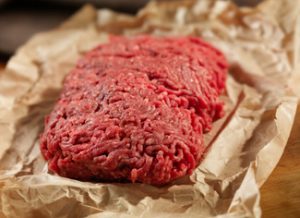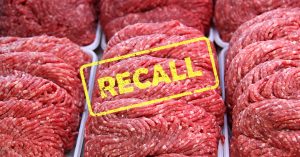Sorenne loves her salami — or smallgoods as they are sometimes called in Australia.
 Now its gone all artsy or artisanal but there’s still a microbiological risk.
Now its gone all artsy or artisanal but there’s still a microbiological risk.
As of the start of the 21st century, consumers have developed a growing interest in so called “traditional or artisanal” food. The renewed interest in this type of food is explained by consumers’ perception of these products. In fact, traditional food has a general positive image across Europe, and European consumers trade off the relative expense and time required for preparation of traditional food for its specific taste, quality, appearance, nutritional value, healthiness and safety (Almli et al., 2011 and Guerrero et al., 2009). Such food is often produced by small farms, and so the rural economy benefits from the increase in activity and profits through direct sales at local food markets (Berlin et al., 2009 and Carey et al., 2011).
Although the term “traditional foods” is widely used, the concept of traditional food products embraces different dimensions and there are hardly any definitions that clearly define traditional foods. In order to identify “traditional” foods, the EU legislation (EC, 2006a, EC, 2006b and EC, 2012) has defined criteria based on product designations that are linked to geographical origin or traditional production methods. In addition, the EuroFIR FP6 Network of Excellence provided a definition of traditional foods which includes statements about traditional ingredients, traditional composition and traditional type of production and/or processing method (Weichselbaum et al., 2009).
Among European countries, Italy is the lead producer of traditional foods and products such as foods with Protected Designation of Origin (PDO) or Protected Geographical Indication (PGI), followed by France, Spain, Portugal and Greece (ISMEA, 2013). Additionally, it is estimated that Italy has around 5000 traditional local food products without any certification (CIA, 2015), which could represent an important resource contributing to the development and sustainability of rural areas, providing ample variety in food choice for the consumer and a remarkable income for the economy. With its 371 typical products, Veneto Region is the fourth Italian Region according to number of traditional food products after Toscana, Campania and Lazio (Mipaaf, 2014). In addition, since 2007, Veneto Region has implemented regional legislation which defines a simplified procedure to sell small quantities of traditional food products at local level directly from the producer to the consumer (DGR, 2007 and DGR, 2008). In Veneto Region, many typical fermented sausages such as salami and soppresse are produced with traditional technologies, and so the legislation has been focused firstly on these products and subsequently on other types of meat products (poultry and rabbit meat) and products of non-animal origin (canned food; fruit juices; flour and dried vegetables; bread and bakery products; extra virgin olive oil).
In relation to fermented sausages, the legislation defines the production season, the maximum number of animals that can be reared and the minimum rearing period for pigs on the production farm as well as the minimum hygienic pre-requisites of the work areas used for processing pork meat into fermented sausages. Since these sausages are mainly produced following traditional practice in small processing units, starter cultures are not added to the minced pork meat and ripening is carried out in rooms with less temperature and relative humidity control than that used by industrial manufacturers. Therefore, deviations in temperature and/or humidity can result in insufficient fermentation-drying processes, meaning the absence of pathogens in the final products is not assured. The presence of food-borne pathogens such as Listeria monocytogenes, Escherichia coli O157, and Salmonella spp. in fermented sausages has been reported.
 Concerning L. monocytogenes, the pathogen was detected at the end of ripening in 40% of “Salsiccia Sarda” (a traditional Italian fermented sausage) with contamination levels always lower than 100 cfu/g ( Meloni et al., 2012), while a prevalence of 15% was reported in fermented sausages produced in northern Italy (De Cesare et al., 2007). Other studies conducted on traditional fermented sausages at the end of the ripening period showed a L. monocytogenes prevalence of 10% in France ( Thevenot et al., 2005), 16% in Spain (Martin et al., 2011), 42% in Greece (Gounadaki et al., 2008) and 60% in Portugal (Ferreira et al., 2007). The prevalence of Salmonella spp. in traditional fermented sausages is lower than Listeria: the presence of Salmonella was reported in two out of 38 batches of traditional Portuguese sausages (alheiras) ( Ferreira et al., 2007) and in three out of 21 (14%) batter samples of traditional Greek fermented sausages but not in the final products (ready to be sold) (Gounadaki et al., 2008). In relation to verocytotoxin-producing E. coli (VTEC), including E. coli serotype O157:H7, for which meat and meat products are considered the main source of infection for humans, an overall VTEC prevalence of 16% was found in fresh pork sausages collected in the southern part of Italy ( Villani et al., 2005).
Concerning L. monocytogenes, the pathogen was detected at the end of ripening in 40% of “Salsiccia Sarda” (a traditional Italian fermented sausage) with contamination levels always lower than 100 cfu/g ( Meloni et al., 2012), while a prevalence of 15% was reported in fermented sausages produced in northern Italy (De Cesare et al., 2007). Other studies conducted on traditional fermented sausages at the end of the ripening period showed a L. monocytogenes prevalence of 10% in France ( Thevenot et al., 2005), 16% in Spain (Martin et al., 2011), 42% in Greece (Gounadaki et al., 2008) and 60% in Portugal (Ferreira et al., 2007). The prevalence of Salmonella spp. in traditional fermented sausages is lower than Listeria: the presence of Salmonella was reported in two out of 38 batches of traditional Portuguese sausages (alheiras) ( Ferreira et al., 2007) and in three out of 21 (14%) batter samples of traditional Greek fermented sausages but not in the final products (ready to be sold) (Gounadaki et al., 2008). In relation to verocytotoxin-producing E. coli (VTEC), including E. coli serotype O157:H7, for which meat and meat products are considered the main source of infection for humans, an overall VTEC prevalence of 16% was found in fresh pork sausages collected in the southern part of Italy ( Villani et al., 2005).
In addition, food-borne outbreaks associated with the consumption of fermented meats are reported in the literature. In Veneto Region of Italy, in January 2004, a family outbreak of E. coli O157 infection caused by a dry-fermented traditional salami made with pork meat and produced in a local plant occurred ( Conedera et al., 2007). In Norway, an outbreak caused by E. coli O103:H25 involving 17 patients was attributed to the consumption of fermented sausages ( Sekse et al., 2009). Concerning Salmonella, an outbreak of Salmonella Typhimurium DT104A involving 63 cases associated with the consumption of traditional pork salami was reported in Lazio Region of Italy ( Luzzi et al., 2007). Another outbreak of Salmonella Typhimurium associated with the consumption of unripened salami was reported in Lombardia Region of Italy ( Pontello et al., 1998). L. monocytogenes outbreaks associated with the consumption of fermented sausages have not been reported, to our knowledge, even though L. monocytogenes has been implicated in several listeriosis outbreaks linked to the consumption of pre-sliced ready-to-eat deli meats ( Thevenot et al., 2006). The infective doses of the above-mentioned micro-organisms can vary widely according to several factors such as the strain, the susceptibility of the host, and the food matrix involved. In case of L. monocytogenes in susceptible individuals, it is unlikely that fewer than 1000 cells may cause disease ( EFSA, 2007). Concerning Salmonella the infective dose is variable but often low numbers of cells (between 10 and 1000) are sufficient to cause disease, the same for EHEC which is known for its low infective dose ( Strachan et al., 2005 and Teunis et al., 2010). The difference in dose-response relationship between the three pathogens may also, to some extent, explain the difference in stringency in surveillance. In European Regulation 2073/2005 (EC, 2005), tolerance of up to 100 cfu/g of L. monocytogenes in ready-to-eat meat products is accepted at the end of shelf life, whereas usually action limits of absence of Salmonella and EHEC per 25 g are applicable.
In order to avoid the marketing of potentially hazardous traditional fermented pork sausages (Italian salami and soppresse) produced within the Veneto region, this study was initiated by the regional competent authorities in collaboration with the small-scale producers with the following aims: a) investigate the production process of traditional salami and soppresse in Veneto Region of Italy; b) identify the microbiological hazards associated with this type of food, and finally; c) identify control measures easily applicable directly by the Food Business Operator (FBO) with the supervision and control of the regional Competent Authority (CA) in order to manage the hazards associated with this type of traditional meat product.
Artisanal Italian salami and soppresse: Identification of control strategies to manage microbiological hazards
Journal of Food Microbiology
Volume 61, February 2017, p. 5-13
Roccato, Anna. Et al.
http://www.sciencedirect.com/science/article/pii/S0740002015301143
 Eleven people infected with the outbreak strain of STEC O157:H7 were reported from five states.
Eleven people infected with the outbreak strain of STEC O157:H7 were reported from five states.











